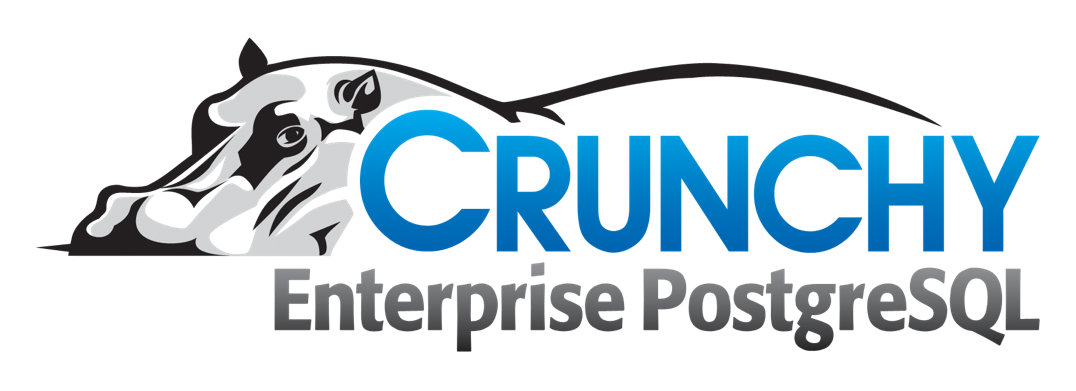Crunchy Watch is an application that watches a PostgreSQL master and looks for a failure, at which point it will perform a failover scenario.
Failover scenarios are extensible. Sample failover scenarios are provided including:
-
trigger a failover on a random replica
-
trigger a failover on a replica using metadata labels
-
trigger a failover on a replica that is further ahead than others
Crunchy Watch is packaged into a Docker container which can execute in a pure Docker 1.12, Kubernetes 1.7, and Openshift 3.6 environments.
You can also run Crunchy Watch outside of a container as a binary.
Crunchy provides a commercially supported version of this container built upon RHEL 7 and the Crunchy supported PostgreSQL. Contact Crunchy for more details at link:http://www.crunchydata.com.
Crunchy Watch is designed to operate on multiple platforms. Therefore, it is necessary to specify the platform at startup.
$> crunchy-watch <platform>
Supported Platforms:
| Name | Value |
|---|---|
Kubernetes |
kube |
Openshift |
openshift |
Example:
$> crunchy-watch kube
All options can be configured via a command-line flag or an environment variable.
Flag values will take precedence over values defined by an environment variable.
There are general options that apply across all platforms. As well, each platform provides their own specific options. The details for each are provided below.
| Option | Environment Variable | Default | Description |
|---|---|---|---|
--primary |
CRUNCHY_WATCH_PRIMARY |
host of the primary PostgreSQL instance |
|
--primary-port |
CRUNCHY_WATCH_PRIMARY_PORT |
5432 |
port of the primary PostreSQL instance |
--replica |
CRUNCHY_WATCH_REPLICA |
host of the replica PostgreSQL instance |
|
--replica-port |
CRUNCHY_WATCH_REPLICA_PORT |
5432 |
port of the replica PostgreSQL instance |
--username |
CRUNCHY_WATCH_USERNAME |
postgres |
login user to connect to PostgreSQL |
--password |
CRUNCHY_WATCH_PASSWORD |
login user’s password to connect to PostgreSQL |
|
--database |
CRUNCHY_WATCH_DATABASE |
postgres |
database to connect |
--timeout |
CRUNCHY_WATCH_TIMEOUT |
10s |
connection timeout - valid time units are "ns", "us", "ms", "s", "m", "h" |
--max-failures |
CRUNCHY_WATCH_MAX_FAILURES |
0 |
maximum number of failures before performing a failover |
--healthcheck-interval |
CRUNCHY_WATCH_HEALTHCHECK_INTERVAL |
10s |
interval between healthchecks - valid time units are "ns", "us", "ms", "s", "m", "h" |
--failover-wait |
CRUNCHY_WATCH_FAILOVER_WAIT |
50s |
time to wait for failover to process - valid time units are "ns", "us", "ms", "s", "m", "h" |
--pre-hook |
CRUNCHY_WATCH_PRE_HOOK |
failover hook to execute before processing failover |
|
--post-hook |
CRUNCHY_WATCH_POST_HOOK |
failover hook to execute after processing failover |
|
--debug |
CRUNCHY_DEBUG |
when set to true, causes debug level messages to be output |
| Name | Environment Variable | Default | Description |
|---|---|---|---|
--kube-namespace |
CRUNCHY_WATCH_KUBE_NAMESPACE |
default |
the kubernetes namespace |
--kube-failover-strategy |
CRUNCHY_WATCH_KUBE_FAILOVER_STRATEGY |
default |
the kubernetes failover strategy |
Building crunchy-watch, supporting plugin modules and docker image are
accomplished using make and the provide Makefile.
-
Go 1.9 or greater
-
Docker 1.12 or greater
-
Kubernetes client (kubectl) 1.7 or greater
-
Openshift client (oc) 3.6 or greater
-
Glide 0.12 or greater
Note: The $> make setup target (below) will retrieve the requisite kubernetes and
openshift client binaries.
These steps assume your normal userid is someuser and you are installing on a clean minimal Centos7 install.
sudo yum -y install docker sudo groupadd docker sudo systemctl enable docker sudo systemctl start docker sudo usermod -a -G docker someuser newgrp docker docker ps
export GOPATH=$HOME/odev mkdir -p $GOPATH/src $GOPATH/bin $GOPATH/pkg mkdir -p $GOPATH/src/github.com/crunchydata/ export PATH=$PATH:$GOPATH/bin export CCP_BASEOS=centos7 export CCP_PGVERSION=10 export CCP_PG_FULLVERSION=10.3 cd $GOPATH/src/github.com/crunchydata git clone https://github.com/CrunchyData/crunchy-watch.git cd crunchy-watch
|
Note
|
To build the RHEL based image, you will need the Crunchy repo keys to be copied to the $GOPATH/src/github.com/crunchydata/crunchy-watch directory. This is because the RHEL image is based on the Crunchy RPM packages. |
cp CRUNCHY-GPG-KEY.public $GOPATH/src/github.com/crunchydata/crunchy-watch cp crunchypg*.repo $GOPATH/src/github.com/crunchydata/crunchy-watch
make docker-image
| Target | Description |
|---|---|
all |
(default) calls |
build |
builds |
modules |
builds all plugin modules |
kube-module |
builds kubernetes plugin module |
openshift-module |
builds openshift plugin module |
clean |
cleans all build related artifacts, including dependencies. |
resolve |
resolves all build related dependencies |
docker-image |
build docker image - Note: requires |
|
setup |
Crunchy Watch is designed with extension of its function and supported platforms in mind.
Crunchy Watch makes use of the golang plugin package. Therefore it is possible to build support for new platforms separate from each other.
To integrate with the plugin system the following interface must be met:
type FailoverHandler interface {
Failover() error
SetFlags(*flag.FlagSet)
}
Failover() is called to process the failover logic for the platform that the
plugin supports.
SetFlags(*flag.FlagSet) is called immediately after the plugin is loaded.
This allows for plugin to define options/flags that are unique to its
operation.
As well, it must be built with the -buildmode=plugin option. See an example
of this in the project Makefile
Crunchy Watch provides both a pre and post failover hook. These hooks will
be executed in a shell environment created by the crunchy-watch process.
Therefore they can be any executable or script that can be called by the user
running the crunchy-watch process.
To configure the execution of these hooks, a fully qualified path to the
executable or script must be provided by either the --pre-hook or
--post-hook flags. Or by defining the CRUNCHY_WATCH_PRE_HOOK or
CRUNCHY_WATCH_POST_HOOK environment variables.
Example:
$> crunchy-watch kube --pre-hook=/tmp/watch-pre-hook
Or,
$> CRUNCHY_WATCH_PRE_HOOK=/tmp/watch-pre-hook crunchy-watch kube
Various examples are provided in the examples directory and described in the
documentation.
To run the examples, you will need to set the CCP_IMAGE_TAG environment
variable which indicates which version of the container you will pull down and
execute, for example:
$> export CCP_IMAGE_TAG=centos7-10.3-1.8.2 $> ./run.sh
Or,
$> CCP_IMAGE_TAG=centos7-10.3-1.8.2 ./run.sh
